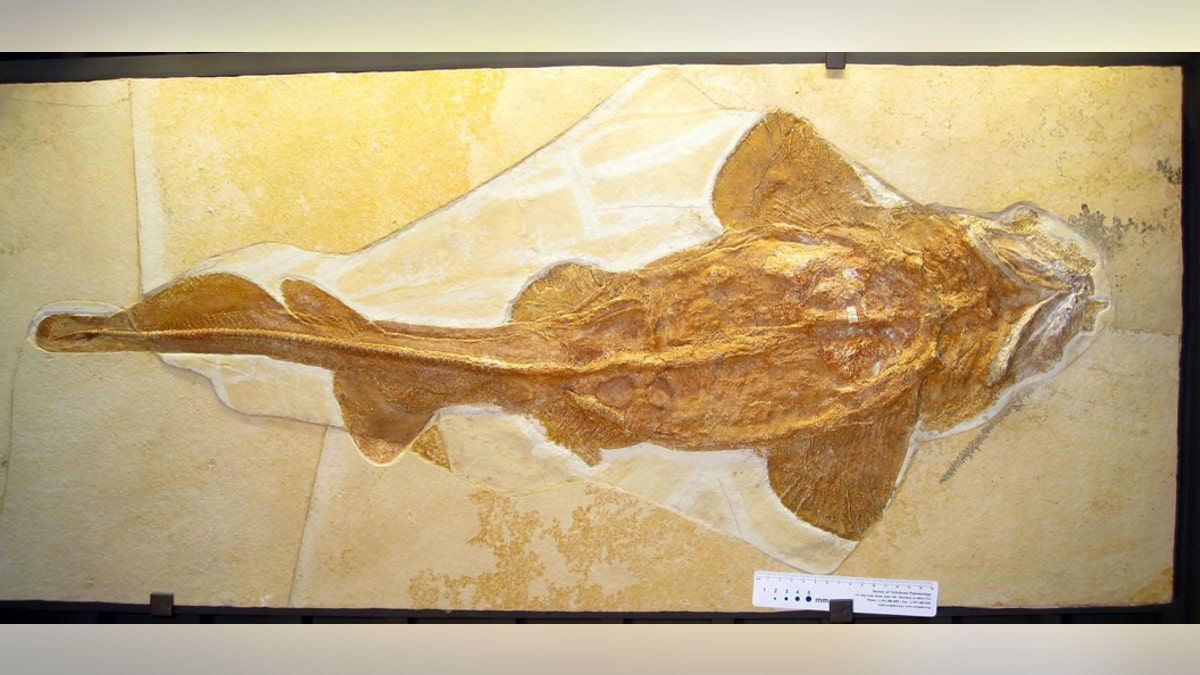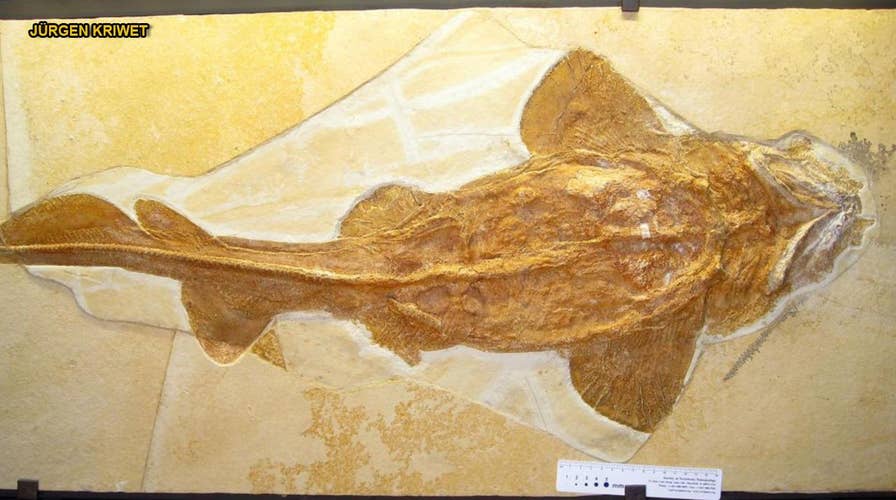Megalodon, great white ancestor discovered: Unassuming shark lived 165M years ago
Prehistoric predator megalodon and its modern-day successor, the great white shark, may be considered two of history's greatest predators, but, according to new research, their ancestry may be a little more unassuming. A small benthic shark known as Palaeocarcharias stromeri, which lived roughly 165 million years ago, is the likely predecessor these fearsome creatures of the deep.
Researchers have unlocked the mystery behind where the prehistoric predator megalodon and its modern-day successor, the great white shark, came from — and it's not what you might expect.
An unassuming, small benthic shark known as Palaeocarcharias stromeri that lived during the middle Jurassic era, some 165 million years ago, is the likely predecessor to two of history's greatest predators, according to a new study in Scientific Reports.
Like its fearsome brethren, Palaeocarcharias stromeri had a unique tooth structure where the osteodentine (a dentine type that looks spongious and resembles real bone) enters the crown of the tooth and completely replaces another dentine type, known as orthodentine.

A whole skeleton of the fossil shark Palaeocarcharias stromeri (total length approximately 1m) from the Jura Museum Eichstätt. (Credit: Jürgen Kriwet)
GREAT WHITE SHARKS SEEN INTERACTING FOR THE FIRST TIME EVER
"Orthodentine is known for almost all vertebrates - from fish to mammals, including all modern sharks, except for the mackerel sharks," the study's lead author, Patrick Jambura, said in a statement.
Jambura and his colleagues used high-resolution scanning technology to look at the compositions of the Palaeocarcharias stromeri's teeth and compare them with mackerel sharks, which include the aforementioned great white, megalodon and the mako, and ultimately make the connection.
"This suggests that Palaeocarcharias stromeri is member of the order Lamniformes, contradicting recent interpretations and thus, dating the origin of this group back at least into the Middle Jurassic," the study's abstract reads.
"The discovery of this unique tooth structure in the fossil shark Palaeocarcharias strongly indicates that we found the oldest known ancestor of the great white shark and shows that even this charismatic giant shark started on a shoestring," Jambura added.
MEGALODON MAY HAVE GONE EXTINCT FOR THIS SHOCKING REASON
Palaeocarcharias has baffled researchers for years, with the abstract adding that its affiliation is "still debated," due in part to the scarcity of its fossils. It also had a shape that was similar to a modern-day carpet shark. But unlike carpet sharks, Palaeocarcharias had "fang like teeth ... similar to mackerel sharks" and likely didn't surpass 3 feet in length, hunting small fish in shallow waters, the statement added.
By comparison, the megalodon grew up to 60 feet in length and had teeth nearly the size of a standard sheet of paper. The world's largest great white is a 20-foot behemoth known as "Deep Blue."
Earlier this year, a new study suggested that megalodons may have died off around 3.6 million years ago, 1 million years sooner than initially thought and may have been outmaneuvered and outdone by their smaller, more agile cousin, the great white.

